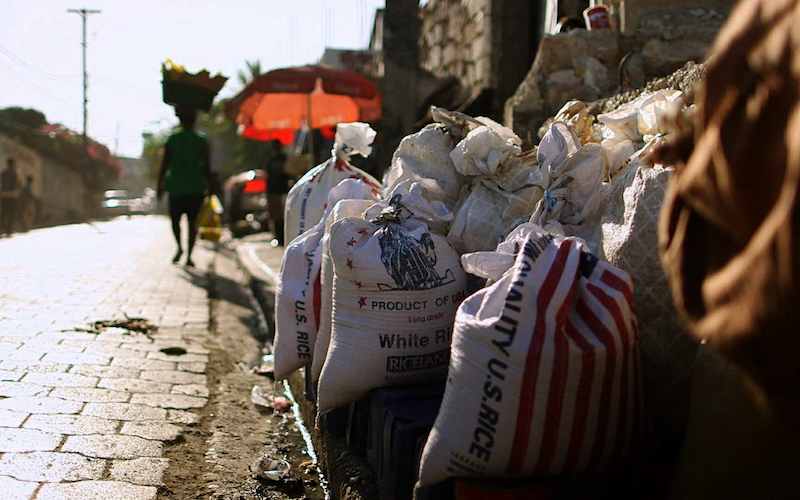
Foreign Aid? Change It Already!
In 2016, USAID issued approximately $22 billion in foreign development assistance (aid) to developing countries and funded 7,900 projects. In Africa specifically, the USAID committed over $7.3 billion to fund over 4,000 development projects. Every year, thousands of US-funded projects join the list of established development-focused projects in the region, but many still remain in poverty. Approximately 43% of the African population lives below the poverty line and thousands still lack the resources and skills necessary to improve their livelihoods.
Marketing campaigns fill media and print channels with messages focused on helping people in developing countries, but the majority of these target populations fail to see the impacts of yearly development assistance. With the frequent waves of funding that are poured into foreign aid, the population should be concerned. To be clear, aid isn’t completely wasteful, but there is significant room for improvement. Aid has enabled African countries to build new roads and infrastructure, help smallholder farmers increase their yields, and decrease disease rates throughout the region. Change is certainly happening, but more can be accomplished.
Citizens in developing countries want the nature of aid to change as badly as we do. “Beneficiaries” despise the dependency that dominates foreign aid. Local citizens want aid to help them improve their social and economic livelihoods. They want development organizations to use aid to train them with the skills they lack but need; they want help protecting their physical security and making their voice heard by their governments. Local citizens want to be in the driving seat and that is exactly where we should put them.
By changing the behaviors of their institutions, funders of foreign development assistance such as USAID can increase the impact of aid in Africa and build the capacities of local communities. Given its size and influence internationally, USAID should revise its current aid distribution process. USAID should facilitate and support development projects so that the capacities of local individuals and organizations can be increased. Grants and contracts should be focused on furthering development and addressing the needs of target populations and step away from the focus of solely fulfilling requests for proposals/applications (RFP/A) requirements. Lastly, USAID should set reasonable and feasible program indicators that create accountability and allow various measures of success.
USAID should assume the role of a facilitator because it will remove the long-standing aspect of local dependency. Most USAID RFP/As require implementing organizations to propose technical activities that align with country development objectives. However, there is still a great focus on hiring expatriates to deliver services, which leaves local actors barely engaged. Developing countries already have groups of talented experts and professionals that have knowledge in the intervention’s skill area. Development programs should be focused on identifying these local experts, assessing their level of understanding, and offering them training and guidance in the areas so that local actors can have the capacity to accomplish the program’s objectives. If we support their participation, we will begin to see better country ownership, which will lead to improved economic livelihoods and long-term development.
USAID should choose implementing organizations that offer the most impactful development objectives because it will refocus the purpose of development and stimulate innovation. US agencies follow a “biggest bang for your buck” mentality and award funding to organizations that clearly incorporate RFP/A requirements at the lowest cost. This process stifles innovation and decreases efficient and effective development activities. Once the program begins, organizations struggle to execute rigid RFP/A activities and target populations suffer from poor planning and limited community engagement. Development will only find “more heart” once agencies “new business” mentalities are left behind.
Lastly, USAID should allow implementing organizations to set feasible indicators that will still maintain accountability because it will allow programs to produce real results. Organizations have become too focused on submitting “excellent” numbers and in turn, can fail to adjust project activities mid-way through fear of seeming ineffective.
Making aid more effective will require changed behaviors and better facilitation. It is time to hand locals the keys and jump in the passenger seat. As leaders in development assistance funding, we need to focus on teaching people how to fish instead of fishing for them. If we refocus our objectives and provide invaluable and intangible services, we can put the “heart” and care back into development and end the cycle of dependency. With more country leaders and stronger capacities, aid will finally be effective.

